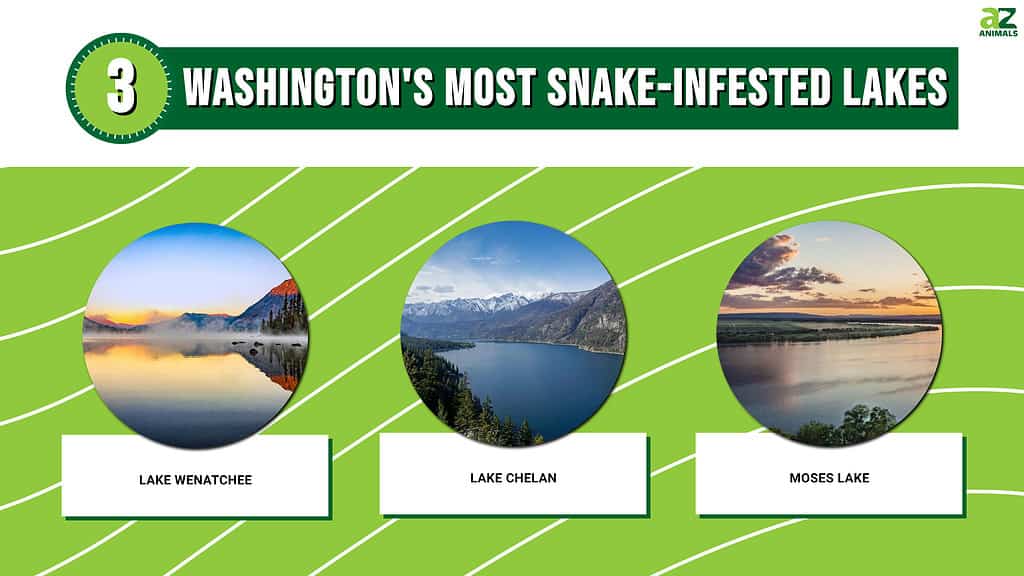
There are around 8,000 lakes in Washington state, and their native snake species are incredibly diverse! In total, around a dozen different species of snakes live in the state. Most of them are skilled enough swimmers to navigate Washington’s waters with ease. But which of the Evergreen State’s many lakes are the most snake-infested of all? Keep reading to learn which lakes are the ideal serpent swimming holes, the types of snakes that frequent them, and some interesting facts about both!
Types of Snakes in Washington’s Lakes
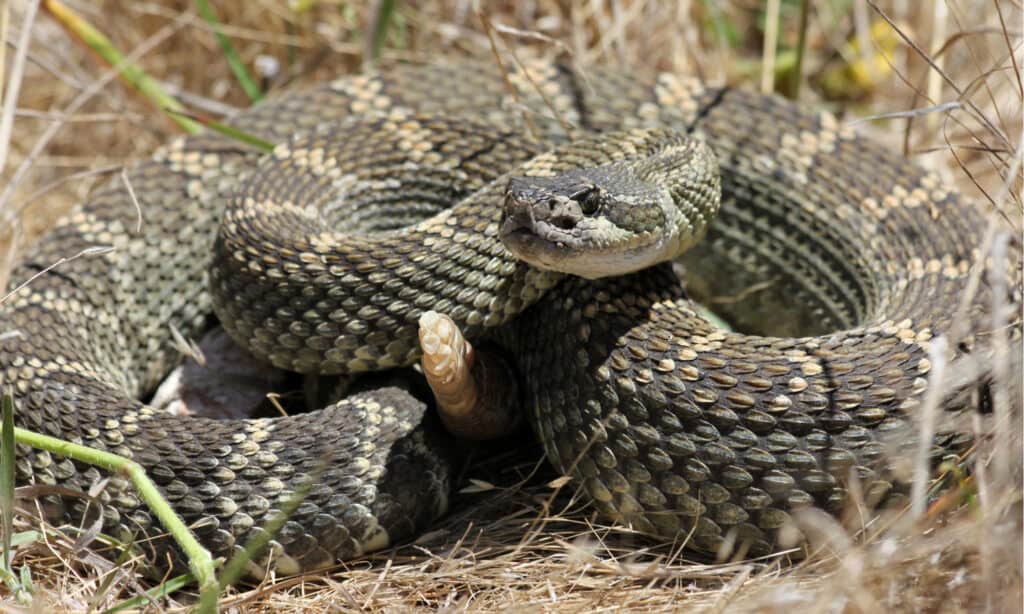
The Northern Pacific rattlesnake is Washington’s only venomous species that poses a threat to humans. Fortunately, it is among the least aggressive and most passive rattlesnake species.
©Ryan M. Bolton/Shutterstock.com
Around a dozen unique species of snakes are native to Washington. None, however, are true water snakes of the Nerodia genus. Still, most of Washington’s resident snakes are quite skilled swimmers, including its only truly venomous species, the Northern Pacific rattlesnake, or the western rattlesnake. Although the native night snake is technically also venomous, its venom is extremely weak. It mainly uses this venom to take down small prey animals like lizards.
Northern Pacific rattlesnakes can be found throughout the state. But they’re most common in eastern Washington, where the climate is more arid, summers are warmer, and winters are colder. Fortunately, the species is generally non-aggressive and avoidant of humans–it hasn’t caused any deaths in Washington in a few decades.
Other species, like Washington’s three native garter snakes, are especially adept swimmers despite not actually being true water snakes taxonomically. Although they are mostly terrestrial, they are just as skilled at scaling trees and traversing bodies of water. Hardy, adaptable, and most importantly, harmless, they can be found throughout Washington state, mainly in forested areas near water.
Aside from garter snakes, other widespread species include the woodland-dwelling gopher snake, which gets its name from its affinity for eating pocket gophers, and the slender and speedy eastern racer. Both are common throughout Washington and are especially abundant east of the Cascade Mountains.
Finally, a handful of other species in Washington are much less widespread, most notably the night snake and rubber boa. The night snake is poorly understood due to its incredibly elusive nature. Luckily, it is generally non-aggressive and easy to handle. While it is technically venomous, its venom is very weak and poses no threat to humans.
The rubber boa, meanwhile, is similarly rarely encountered and also harmless to humans. It is occasionally spotted in eastern Washington in damp wooded areas. Its common name is a reference to its smooth, shiny brown scales, which give its body a rubbery appearance.
Washington’s 3 Most Snake-Infested Lakes
While Northern Pacific rattlesnakes are most often spotted near eastern Washington’s waters, many of its other non-venomous native species can be found throughout much of the state. Three of Washington’s most snake-infested lakes are Lake Wenatchee and Lake Chelan in Chelan County and Moses Lake in Grant County. Most of the state’s native snake species thrive near these lakes. Sightings of species like the garter snake, gopher snake, and racer are especially common.
1. Lake Wenatchee
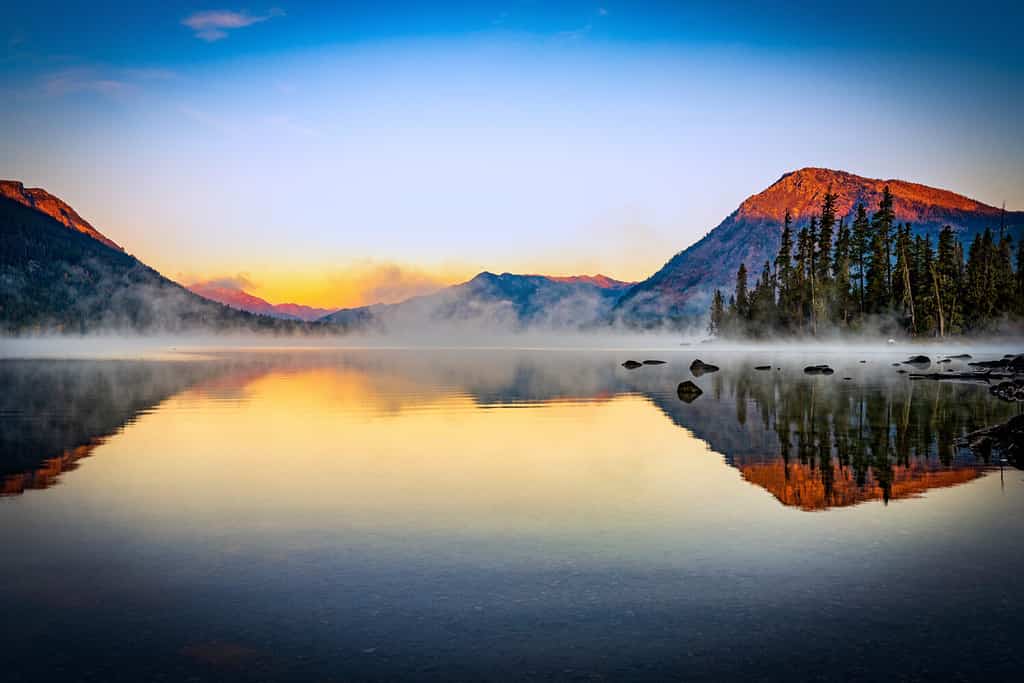
Chelan County’s Lake Wenatchee is home to at least seven native snake species, including the elusive rubber boa.
©CHARLES MORRA/Shutterstock.com
Central Washington’s Chelan County boasts a wide range of snakes. In fact, just about every native species in the state can be found there, particularly in and around its lakes and rivers. Despite being one of Washington’s colder lakes fed by the Cascade Mountains’ melting snow and glaciers, Lake Wenatchee has plenty of snakes, from small and unassuming garters to the nearly five-foot-long gopher snake. Even rubber boas occasionally make an appearance here, though they are fairly skittish and avoidant of humans.
Fortunately, the state’s only venomous snake, the Northern Pacific rattlesnake, isn’t often spotted here. This is because it generally prefers eastern Washington’s drier climate. Regardless, it is still an occasional visitor. The nearby Okanogan-Wenatchee National Forest provides it and its non-venomous neighbors with an almost two-million-acre haven to explore.
Lake Wenatchee covers nearly 2,500 acres and has a maximum depth of almost 250 feet. It is the source of the Wenatchee River, and its primary tributaries are the White and Little Wenatchee Rivers. Lake Wenatchee State Park rests along the eastern end of Lake Wenatchee. The park covers almost 500 acres.
2. Lake Chelan
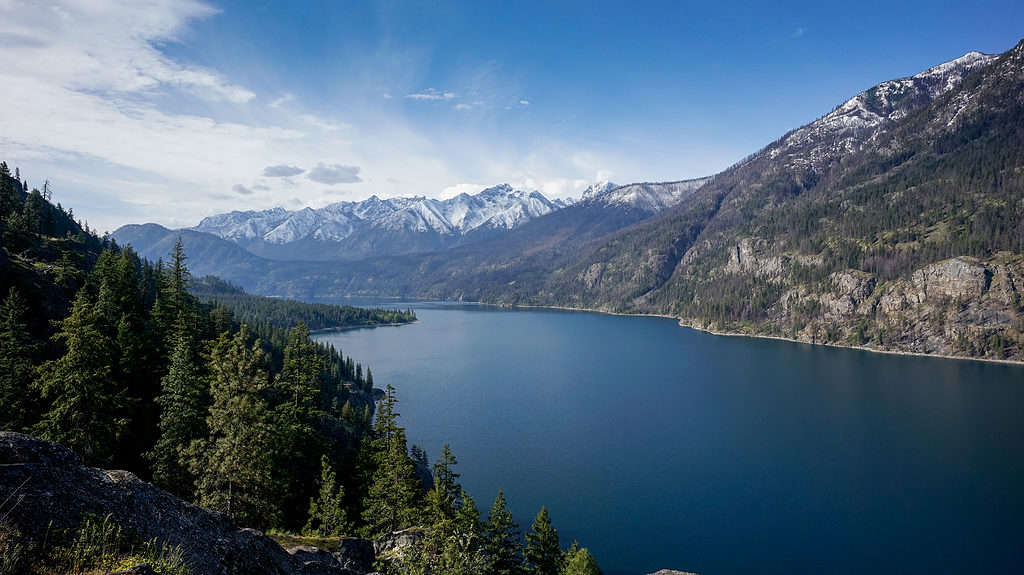
Many of Washington’s native snake species live in and around Lake Chelan, including night snakes, gopher snakes, garter snakes, and Northern Pacific rattlesnakes, the state’s only truly venomous species.
©iStock.com/Bill Kingman
The next lake on our list is also located in Chelan County and happens to be one of Washington’s very largest lakes. It’s none other than Lake Chelan, which covers over 50 square miles. Despite being fairly narrow, it’s also one of Washington’s deepest lakes, with a maximum depth of almost 1,500 feet.
Similar to the aforementioned Lake Wenatchee, Lake Chelan also hosts a diverse array of snake species, the vast majority of which are non-venomous and harmless to humans. While Northern Pacific rattlers occasionally pass through here, they’re much more common in the further eastern reaches of the state. You’re far more likely to spot one of the state’s three native garter snake species: the common, northwestern, and terrestrial varieties. All three are similar in size and overall appearance, only differing slightly in color and scale patterning.
The state’s largest snake, the gopher snake, is also quite common at Lake Chelan and in Chelan County in general. Though its ornate brown and tan patterning can make it resemble a rattlesnake from a distance, the species is harmless to humans. It occasionally will mimic a rattlesnake’s striking posture, however, in order to scare off looming predators and unsuspecting humans.
3. Moses Lake
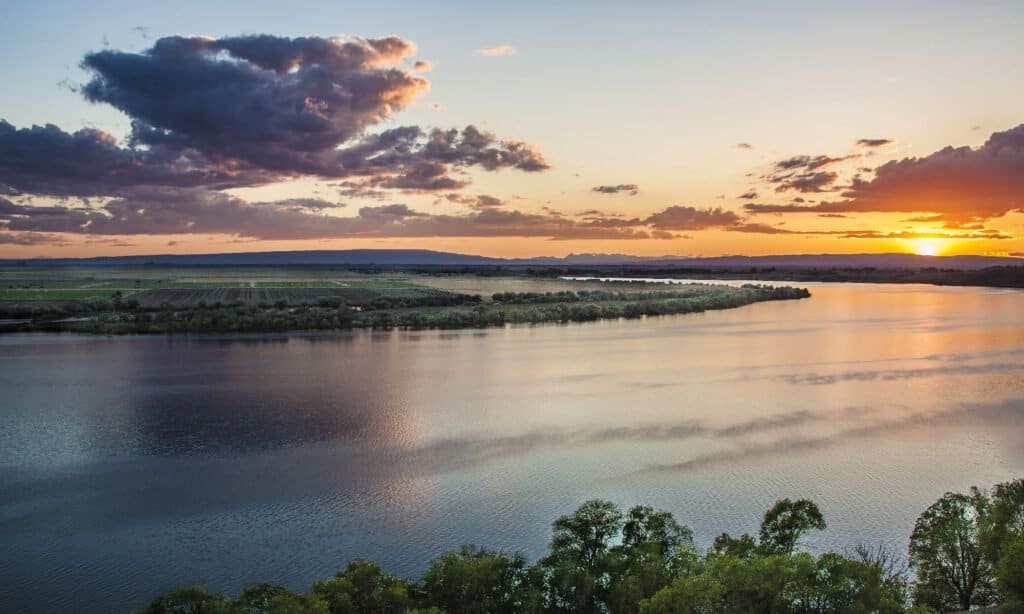
Northern Pacific rattlesnakes are common near Grant County’s Moses Lake, as well as a handful of other native snake species.
©alexmisu/Shutterstock.com
The last lake on our list of Washington’s most snake-infested swimming holes is Moses Lake. Located in Grant County, the lake and the surrounding city of the same name are notable for its many Northern Pacific rattlesnake sightings. Moses Lake is also part of the Columbia River basin, which happens to also be one of Washington’s most snake-infested rivers.
In addition to the Northern Pacific rattlesnake, most of Washington’s other native snake species are abundant here throughout much of the year, aside from their hibernatory period in the winter. However, they’re most active during the spring and summer months–their breeding season. You’re also more likely to see the baby and juvenile snakes here during the late summer months when they hatch from eggs laid by their parents in May through July.
Originally, Moses Lake was a natural lake. But in the early 1900s, it was dammed to provide better irrigation to the surrounding area as part of Central Washington’s Columbia River Basin Project. Its name is a tribute to Chief Moses, a Native American Sinkiuse-Columbia chief. His tribe lived primarily in the Moses Lake area in the 1800s.
Today, Moses Lake has a surface area of around 6,800 acres and a maximum depth of 38 feet. Its main inflow is Crab Creek, a tributary of the Columbia River. It has a rather irregular shape consisting of several branching arms or “horns,” including Lewis Horn, Parker Horn, and Pelican Horn. The lake also has several small islands.
Summary of the 3 Most Snake-Infested Lakes in Washington State
| Lake | Native Snakes | |
|---|---|---|
| 1 | Lake Wenatchee | Northern Pacific and Western rattlesnakes; rubber boas; common, Northwestern, and terrestrial garter snakes |
| 2 | Lake Chelan | Common, Northwestern, and terrestrial garter snakes; Northern Pacific rattlesnakes; gopher snakes |
| 3 | Moses Lake | Northern Pacific rattlesnakes |
The photo featured at the top of this post is © Ryan M. Bolton/Shutterstock.com
Discover the "Monster" Snake 5X Bigger than an Anaconda
Every day A-Z Animals sends out some of the most incredible facts in the world from our free newsletter. Want to discover the 10 most beautiful snakes in the world, a "snake island" where you're never more than 3 feet from danger, or a "monster" snake 5X larger than an anaconda? Then sign up right now and you'll start receiving our daily newsletter absolutely free.
Thank you for reading! Have some feedback for us? Contact the AZ Animals editorial team.







